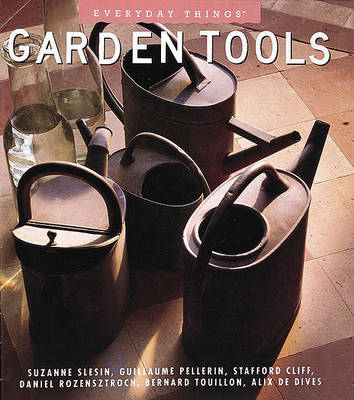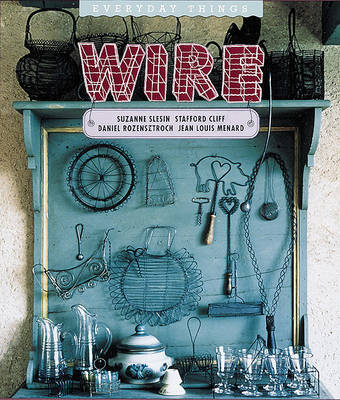Everyday Things S.
3 total works
Garden tools are inseparable from gardens, and yet, while the history of gardens has been exhaustively explored, the story of garden tools has been virtually ignored - until now. As authors Suzanne Slesin and Guillaume Pellerin reveal in this lushly designed and nostalgia-filled volume, embedded in these familiar, everyday tools is a rich history that documents the tastes and passions of gardeners through the ages. Illustrated with hundreds of full-color photographs of garden tools, as well as with vintage lithographs, engravings, posters, ads, and even decorative plates depicting garden implements, the book follows the gardening cycle, from Preparing the Earth to Harvesting, and each chapter features the traditional tools used in that phase of gardening. The Sowing chapter, for instance, presents an array of dibbers, trowels, seeders, and terra-cotta pots, while the Pruning chapter offers a host of knives, grafters, pincers, saws, scythes, hatchets, billhooks, and a mind-boggling variety of pruners. Today, vintage garden tools are being rediscovered and appreciated anew as much for their ingeniousness as for their sculptural and timeless form. Garden Tools casts these humble objects in a whole new light, and anyone who loves to dig a spade into the earth or prune a rosebush will find the book irresistibly compelling.
Wire objects have worked their way into virtually every human activity. Since the eighteenth century, such occupations as housekeeping, cooking, gardening, fishing, and hunting were unthinkable without them. Shopkeepers fashioned wire into display racks, and children played with wire toys. Many pieces, such as fruit bowls, platters, and baskets of all kinds served both practical and decorative functions. With its vintage photographs, pages from early catalogs, old advertisements, and more than 300 evocative full-color photographs, Wire reveals why there is such a strong revival of interest in these pieces and demonstrates how they can be integrated into our homes today.
Featured in this handsomely designed, nostalgia-tinged volume are ironstone, the graceful, elegant china of myriad shapes first produced in England in the nineteenth century; redware, the first pottery of Colonial America, which was turned on a wheel and then covered with a clear glaze that made the clay waterproof; spongeware, a colorful descendant of English Staffordshire spatterware that is named for its style of decoration rather than its type of clay; mochaware, extraordinary pieces of earthenware with elaborate colored slip decorations; and yellowware, the down-home pottery that has been a kitchen staple since the 1820s. Today, these once simply utilitarian and serviceable objects are collector's items both for their rarity and for their decorative qualities; best of all, they can still be used in the kitchen or to add a homey touch to any decor.


